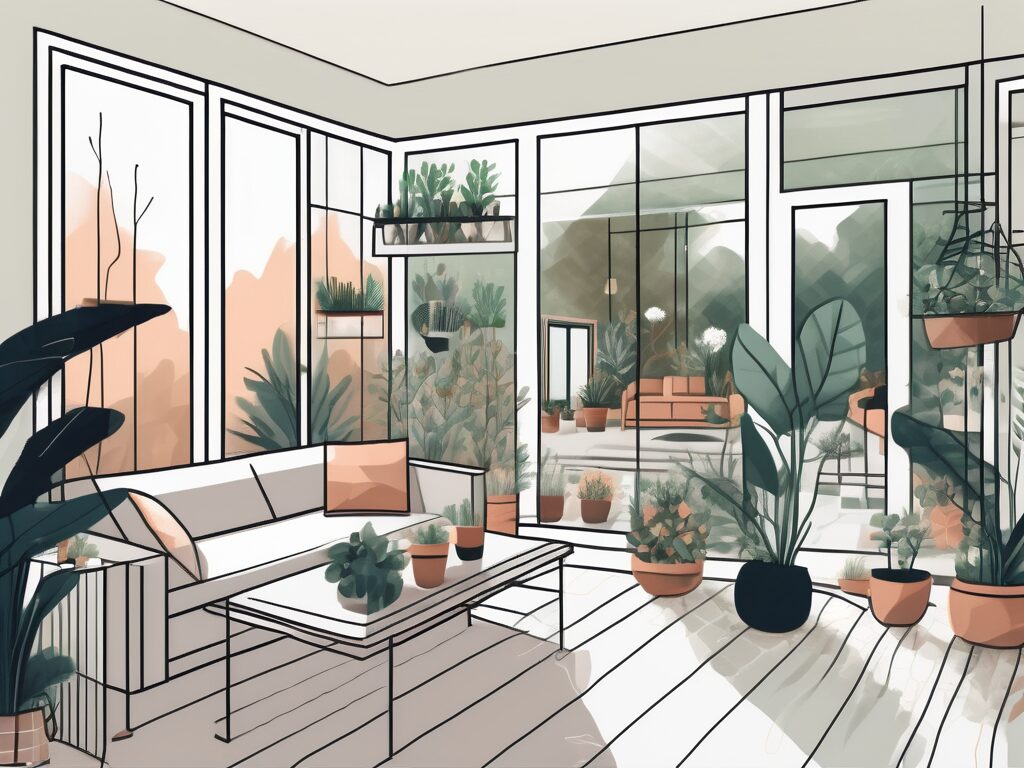
Agent A-Team or Solo Superhero? Finding the Right Real Estate Partner for Your Selling Journey in Wildwood Florida
When it comes to selling your home in Wildwood, Florida,…
January 29, 2024
If you’re considering adding a sunroom to your home, it’s important to take into account several factors before diving into the renovation process. One crucial aspect to consider is your home’s value. Assessing your home’s value before renovating can help you determine the right sunroom option for your budget and maximize your return on investment. In this article, we will explore why knowing your home’s value before renovations is essential and provide valuable tips on calculating sunroom costs and ensuring a successful addition.
Before embarking on any home renovation project, it’s vital to have a clear understanding of your home’s current market value. Knowing this information will help guide your decision-making process and prevent overspending on renovations that may not align with the value of your property.
One of the primary reasons for considering your home’s value before renovating is to ensure that the cost of the sunroom addition aligns with the overall worth of your property. Investing a significant amount of money into a sunroom that exceeds the value of your home may not provide the desired return on investment when it comes time to sell.
Moreover, knowing your home’s value allows you to have a better understanding of the potential appreciation that can be achieved through renovations. By assessing the current market value, you can determine the maximum amount you should invest in a sunroom project to ensure a reasonable return on investment.
Additionally, understanding your home’s value allows you to assess your financial capabilities and determine the most suitable budget for your sunroom project. It will help you make informed decisions when selecting the type, size, and features of your sunroom while staying within your means.
Furthermore, having a clear idea of your home’s value can help you prioritize renovations. You can focus on areas that will have the most significant impact on your property’s worth, ensuring that your investment is well-spent. For example, if your home’s value is primarily determined by the number of bedrooms, you may want to prioritize adding an extra bedroom rather than investing in a sunroom.
Knowing your home’s value also gives you an advantage when negotiating with contractors and suppliers. Armed with this information, you can confidently discuss your budget and negotiate prices, ensuring that you get the best value for your money.
Lastly, understanding your home’s value before renovating allows you to plan for the future. By considering the potential increase in value, you can strategize your renovations to maximize your property’s worth over time. This long-term perspective can help you make more informed decisions and ensure that your home remains a valuable asset.
When it comes to sunroom options, three-season sunrooms are a popular choice due to their affordability and versatility. These sunrooms can be enjoyed during spring, summer, and fall, extending your living space and providing a unique indoor-outdoor experience.
Imagine waking up on a beautiful spring morning, stepping into your three-season sunroom, and being greeted by the gentle warmth of the sun’s rays. The soft breeze rustles the leaves of nearby trees, creating a soothing soundtrack to accompany your morning coffee. As the seasons change, so does the ambiance of your sunroom. In the summer, you can open the windows and let the fresh air in while enjoying the view of your lush green garden. In the fall, the sunroom becomes a cozy retreat where you can watch the leaves change colors and feel the crispness in the air.
The costs of three-season sunrooms can vary depending on their size and the materials used. Generally, a small three-season sunroom can range from $10,000 to $20,000, while a larger, more elaborate sunroom may cost between $20,000 and $40,000. It’s essential to consult with professionals and obtain multiple quotes to get an accurate estimate tailored to your specific needs.
When considering the size of your three-season sunroom, think about how you plan to use the space. Are you looking for a cozy nook to relax and read a book, or do you envision a larger area where you can entertain guests? The size of your sunroom will determine the amount of natural light that enters the space and the overall feel of the room. A smaller sunroom may provide a more intimate and cozy atmosphere, while a larger sunroom can accommodate more furniture and activities.
Another factor to consider when exploring the costs of three-season sunrooms is the materials used. The choice of materials can greatly impact the price and durability of your sunroom. Common materials used for three-season sunrooms include aluminum, vinyl, and wood. Each material has its own advantages and disadvantages, so it’s important to research and choose the one that best suits your needs and budget.
Aluminum sunrooms are known for their strength and durability. They are resistant to rust and require minimal maintenance. Vinyl sunrooms, on the other hand, are known for their energy efficiency and affordability. They are easy to clean and offer excellent insulation. Wood sunrooms provide a classic and elegant look, but they require more maintenance and may be more susceptible to weather damage.
When planning your three-season sunroom, it’s also worth considering additional features and upgrades that can enhance your experience. These may include ceiling fans for added comfort during hot summer days, skylights to bring in more natural light, or even a fireplace to create a cozy atmosphere during the cooler months.
Ultimately, the price range and options for three-season sunrooms offer a wide range of possibilities to suit different budgets and preferences. Whether you’re looking to create a peaceful retreat or an entertainment space, a three-season sunroom can be a valuable addition to your home, allowing you to enjoy the beauty of nature throughout multiple seasons.
If you live in a region with harsh winters or desire a sunroom that can be enjoyed year-round, a four-season sunroom is an excellent option to consider. These sunrooms are built with additional insulation and HVAC systems, allowing them to maintain a comfortable temperature throughout the year.
Imagine stepping into your four-season sunroom on a chilly winter morning. As you sip your hot cup of coffee, you can bask in the warmth of the sun streaming through the large windows. The insulation in these sunrooms ensures that the cold air stays outside while you enjoy the cozy atmosphere inside.
Not only do four-season sunrooms provide a comfortable space during winter, but they also offer a refreshing retreat during the scorching summer months. With the help of the HVAC system, you can keep the sunroom cool and comfortable, allowing you to enjoy the beauty of the outdoors without the discomfort of the heat.
Four-season sunrooms tend to be more expensive due to the added insulation and HVAC requirements. Prices for smaller four-season sunrooms typically start around $20,000 and can go up to $60,000 or more for larger, customized designs. Again, obtaining multiple quotes from reputable contractors is crucial for accurate pricing.
When considering the cost of a four-season sunroom, it’s important to take into account the size of the space you desire. Smaller sunrooms, such as those that can comfortably fit a couple of chairs and a small table, are generally more affordable. However, if you have a larger family or plan to use the sunroom for entertaining guests, a bigger and more customized design might be necessary.
Customization options for four-season sunrooms are vast, allowing you to create a space that suits your personal style and needs. From choosing the type of flooring to deciding on the number and size of windows, you have the freedom to design a sunroom that perfectly complements your home and lifestyle.
It’s worth noting that the cost of a four-season sunroom can also vary depending on the materials used. High-quality materials, such as energy-efficient windows and durable insulation, may come at a higher price but can provide long-term savings on energy bills.
When investing in a four-season sunroom, it’s essential to consider the long-term benefits it offers. Not only does it provide additional living space, but it also increases the value of your home. A well-designed and well-maintained sunroom can be a major selling point if you ever decide to put your house on the market.
Furthermore, a four-season sunroom allows you to connect with nature without leaving the comfort of your home. Whether you use it as a cozy reading nook, a home office, or a place to entertain guests, the versatility of a four-season sunroom is unmatched.
If cost and convenience are top priorities for your sunroom project, considering a prefab sunroom may be the ideal choice. Prefabricated sunrooms are pre-designed and manufactured off-site, reducing both construction time and costs.
When it comes to cost, it’s important to note that prefab sunrooms can vary significantly depending on the manufacturer, size, and features. The price range for prefab sunrooms typically falls between $5,000 to $30,000, offering an affordable alternative for homeowners with a limited budget. However, it’s crucial to conduct thorough research on different manufacturers to ensure you are getting the best value for your money.
One factor to consider when comparing costs is the size of the sunroom. Larger sunrooms will naturally cost more due to the increased materials and labor required for construction. However, they also offer more space and versatility, allowing you to create a truly expansive and comfortable living area.
Another aspect that influences the cost is the features included in the prefab sunroom. Some manufacturers offer basic models that provide the essentials, while others offer more luxurious options with additional amenities such as heating and cooling systems, integrated lighting, and advanced insulation. These added features can significantly enhance the comfort and functionality of your sunroom, but they will also affect the overall price.
It’s also important to consider the quality of the prefab sunroom. While affordability is a key advantage of prefabricated options, it’s essential to ensure that the quality meets your expectations. Researching customer reviews and testimonials can provide valuable insights into the reputation and reliability of different manufacturers. Additionally, checking if the manufacturer offers any warranties or guarantees can give you peace of mind knowing that your investment is protected.
When comparing the costs of prefab sunrooms from different manufacturers, it’s crucial to take into account not only the initial price but also the long-term value. While one manufacturer may offer a lower upfront cost, they may compromise on quality or use subpar materials, resulting in higher maintenance and repair expenses down the line.
On the other hand, a slightly higher-priced prefab sunroom from a reputable manufacturer may provide better durability, energy efficiency, and overall longevity. This can save you money in the long run by reducing the need for frequent repairs and ensuring that your sunroom remains in excellent condition for years to come.
Additionally, it’s worth considering the customer service and support provided by different manufacturers. A manufacturer that offers excellent customer service can be invaluable, especially if you encounter any issues or have questions during the installation or maintenance process. Prompt and reliable support can make your sunroom project a smooth and hassle-free experience.
In conclusion, prefab sunrooms offer an affordable and convenient option for homeowners looking to add a sun-filled space to their homes. By considering factors such as cost, size, features, quality, and customer service, you can make an informed decision and find the perfect prefab sunroom that meets both your budget and your expectations.
When determining sunroom costs, it’s essential to have a clear understanding of what aspects contribute to the overall expenses. The main components that impact the cost of a sunroom include size, materials used, installation labor, permits, electrical work, HVAC systems (for four-season sunrooms), and any additional features or customization.
Size: One of the most significant factors influencing the cost of a sunroom is its size. The larger the sunroom, the more materials and labor will be required. Additionally, larger sunrooms may require additional permits and inspections, adding to the overall expense.
Materials Used: The choice of materials for your sunroom can greatly impact the cost. Different materials have varying price ranges, durability, and aesthetic appeal. Common materials used for sunrooms include glass, vinyl, aluminum, and wood. Each material has its own pros and cons, so it’s important to consider your budget and preferences when making a selection.
Installation Labor: The cost of installation labor is another significant factor to consider. Hiring professionals to construct your sunroom ensures a high-quality result, but it comes at a cost. The complexity of the design and the time required for installation will influence the labor expenses. It’s important to obtain quotes from multiple contractors to compare prices and ensure you’re getting a fair deal.
Permits: Depending on your location and the regulations in place, you may need to obtain permits for building a sunroom. Permit costs can vary significantly, and it’s crucial to factor them into your overall budget. Failure to obtain the necessary permits can result in fines or even the need to dismantle the sunroom.
Electrical Work: If you plan to use your sunroom for various activities, such as entertainment or as a home office, you may need to install electrical outlets and lighting fixtures. This additional electrical work will add to the overall cost of your sunroom. It’s important to hire a licensed electrician to ensure the work is done safely and up to code.
HVAC Systems: For those considering a four-season sunroom, HVAC systems are a crucial component. These systems provide heating and cooling, allowing you to enjoy your sunroom comfortably throughout the year. However, the installation and maintenance of HVAC systems can significantly increase the overall cost of your sunroom.
Additional Features and Customization: If you want to personalize your sunroom with additional features or customization, such as built-in seating, skylights, or specialized flooring, it will add to the overall cost. These extra touches can enhance the functionality and aesthetics of your sunroom, but they should be carefully considered within your budget.
By understanding the various factors that contribute to the cost of a sunroom, you can make informed decisions and plan your budget accordingly. It’s essential to research and gather quotes from reputable contractors to ensure you’re getting the best value for your investment. Remember, a well-designed and properly constructed sunroom can add significant value to your home and provide a space for relaxation and enjoyment for years to come.
While the enjoyment and increased living space a sunroom provides are significant benefits, it’s also essential to consider the potential return on investment (ROI) when adding a sunroom to your home. A higher ROI can be achieved by ensuring that the sunroom aligns with your home’s value and market demand in your area.
When planning to add a sunroom to your home, there are several key considerations to keep in mind to ensure a successful and enjoyable addition. These tips will help guide you throughout the process and maximize the value of your investment.
1. Budget: Determine your budget and carefully research the costs associated with your desired sunroom option.
2. Permitting: Check local building codes and obtain the necessary permits before starting construction.
3. Quality: Choose reputable contractors and manufacturers to ensure high-quality materials and workmanship.
4. Functionality: Consider how you plan to use the sunroom and select features and finishes that align with your needs.
5. Maintenance: Understand the maintenance requirements of different sunroom options and choose one that suits your lifestyle.
In addition to considering sunroom costs, it’s essential to think about the long-term value of your home. According to industry experts, certain renovations have a higher potential to increase property value. In 2024, the top home renovations expected to have a positive impact on property value include kitchen remodels, bathroom upgrades, landscaping improvements, and energy-efficient enhancements.
By carefully assessing your home’s value before renovating and considering the costs and benefits of different sunroom options, you can make informed decisions that align with your budget and maximize your return on investment. Remember to consult with professionals, obtain multiple quotes, and prioritize quality and functionality when adding a sunroom to your home. With proper planning and execution, a sunroom can not only enhance your living space but also increase the overall value and appeal of your property.

If you want the Richr team to help you save thousands on your home just book a call.
 Book a call
Book a call